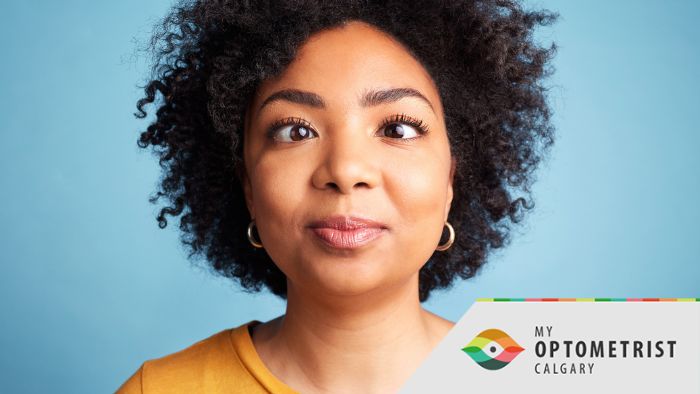
Coping with amblyopia, or "lazy eye," as an adult entails more than managing vision—it touches self-perception and social interactions. Originating from disrupted visual development in childhood, amblyopia can result from prescription imbalances or eye misalignment. Though glasses or contacts don't cure it, they enhance visual function. Recent revelations about the adult brain's plasticity indicate visual therapy can indeed benefit adults, improving vision and depth perception. Beyond the physical, emotional support plays a significant role. Engaging with support groups fosters community and understanding. Ultimately, adults with amblyopia aren't defined by the condition; instead, they chart a life filled with resilience, adaptive strategies, and shared connections. Embracing this unique journey becomes a testament to strength and adaptability.
Embarking on a journey through life with a lazy eye, or amblyopia as it's medically termed, is akin to traveling a road with its unique set of bends and turns. While much attention is directed towards managing this condition in children, its presence in adults brings its own set of challenges and triumphs. Navigating the world with amblyopia is not just about vision but also involves understanding, self-compassion, and strategies to enhance daily life.
Amblyopia doesn't merely manifest as a visual anomaly; it often intertwines with one's self-perception and social experiences. However, there's solace and empowerment in knowing that countless adults with a lazy eye lead fulfilling, dynamic lives, fueled by resilience and adaptive strategies.
Understanding the Origin is the First Step to Coping
Every journey of coping begins with understanding. Amblyopia typically starts in childhood due to a disruption in the normal visual developmental process. This can result from factors like an imbalance in the prescription between the two eyes or a misalignment of the eyes. When one eye sends a blurred image or misaligned signals to the brain, over time, the brain begins to ignore that eye, leading to decreased vision. Recognizing that this isn't a fault but a developmental occurrence can alleviate self-blame and foster acceptance.
Glasses or Contact Lenses: A Vision of Clarity
For many adults with amblyopia, the prescription is key. Depending on the underlying cause, corrective lenses can drastically improve the vision of the weaker eye and balance vision between both eyes. While it's a misconception that glasses or contact lenses can "cure" amblyopia in adults, they can significantly aid in achieving optimal visual function. Furthermore, innovations in lens technology offer aesthetics and comfort, making daily wear more enjoyable.
Visual Therapy: Training the Brain
Though once believed that treatment for amblyopia was only effective in childhood, recent studies have illuminated the brain's remarkable plasticity even in adulthood. Visual therapy, sometimes termed vision training, involves exercises designed to improve the communication between the eye and the brain. Under the guidance of vision therapists or optometrists, adults with a lazy eye can experience notable improvements, not just in vision but in depth perception and eye coordination as well.
Social Support and Acceptance: Building Connections
While the physical aspects of amblyopia are paramount, the emotional and social dimensions are equally vital. Many adults with a lazy eye share feelings of self-consciousness or recount experiences of being misunderstood. However, connecting with support groups, both online and offline, can offer solace. Hearing stories of others, sharing personal triumphs, and even challenges can foster a sense of community.
Beyond just support groups, therapy can be a helpful avenue. Speaking to a therapist can provide coping strategies and tools to boost self-confidence and self-worth. It allows individuals to reframe their experiences, focusing not on the limitation but on their strengths and achievements.
Remember, every individual's experience is unique, but there's strength in shared understanding.
As our exploration of coping with amblyopia winds down, a few insights rise to the surface. Life with a lazy eye is not defined by the condition but by the myriad ways individuals choose to approach it. The journey might be sprinkled with moments of frustration or challenges, but it's also adorned with victories, both big and small.
To every adult living with amblyopia: your vision, both literal and metaphorical, is unique. Embrace it, understand it, and seek avenues to enhance it. There's an entire community ready to support, uplift, and journey alongside. The bends and turns of the road might be many, but they lead to destinations of growth, understanding, and resilience. The narrative of amblyopia isn't one of limitation but of adaptation, and in that, there's profound beauty.
Written on behalf of My Optometrist.
FAQ
Q: Can technology, like virtual reality, assist in treating amblyopia?
A: Emerging research suggests that certain technologies, including virtual reality (VR), may offer promising new ways to conduct visual therapy and enhance vision in individuals with amblyopia. Always consult with an eye specialist about the latest treatments.
Q: Is surgery an option for treating amblyopia?
A: Surgery may address certain causes of amblyopia, like eye misalignment, but it isn't a direct treatment for the vision development disorder itself.
Q: Are there any lifestyle changes that can help manage amblyopia?
A: Engaging in activities that require detailed vision, like reading or crafts, can be beneficial. Also, using the affected eye more often, sometimes called "patching," can be advised by optometrists.